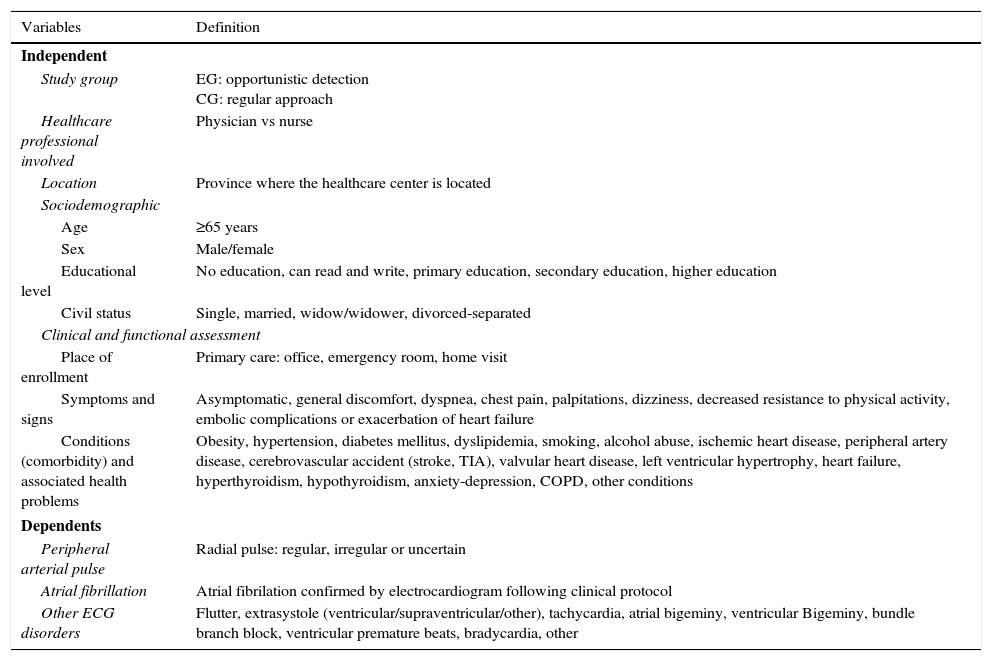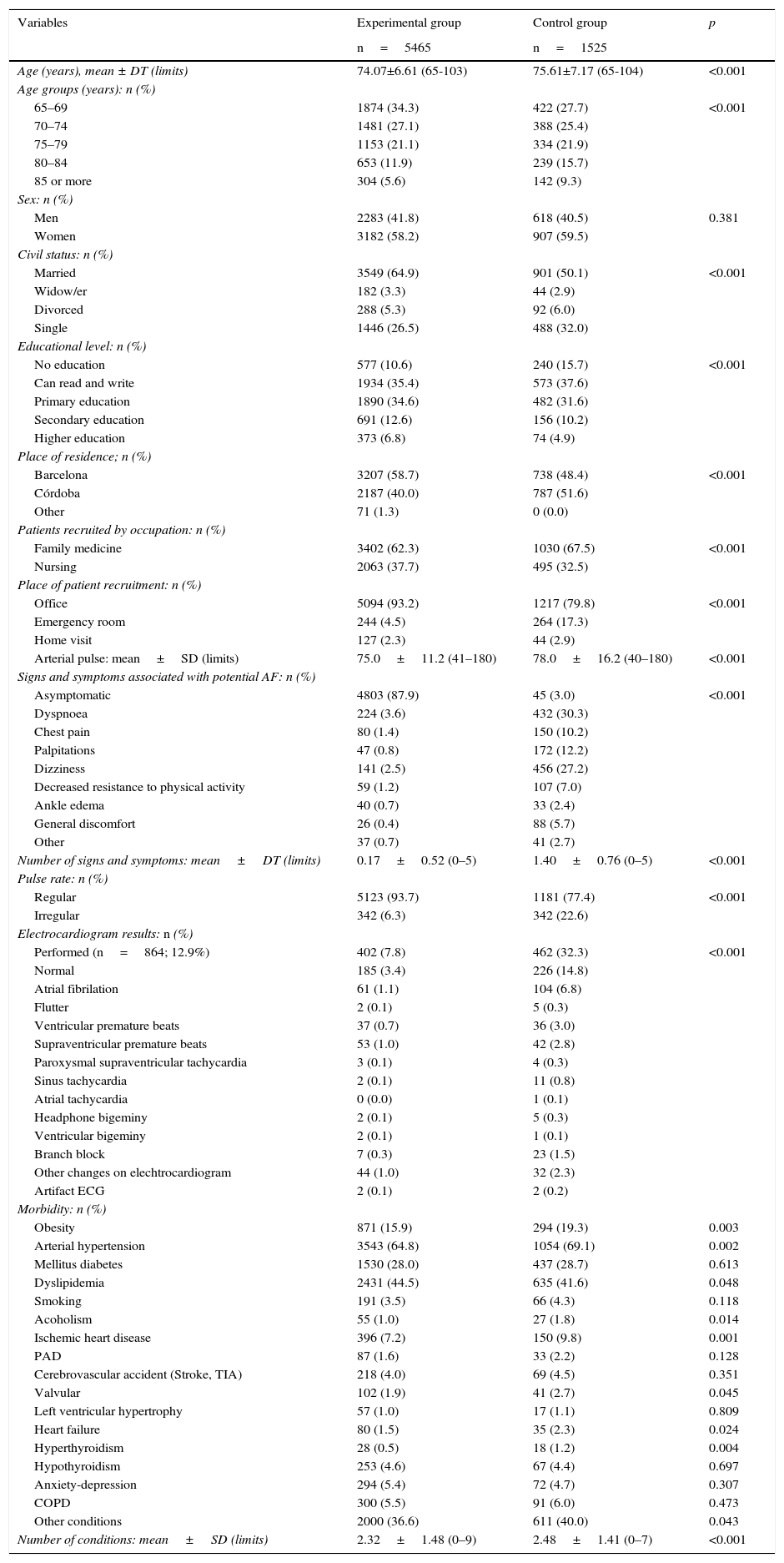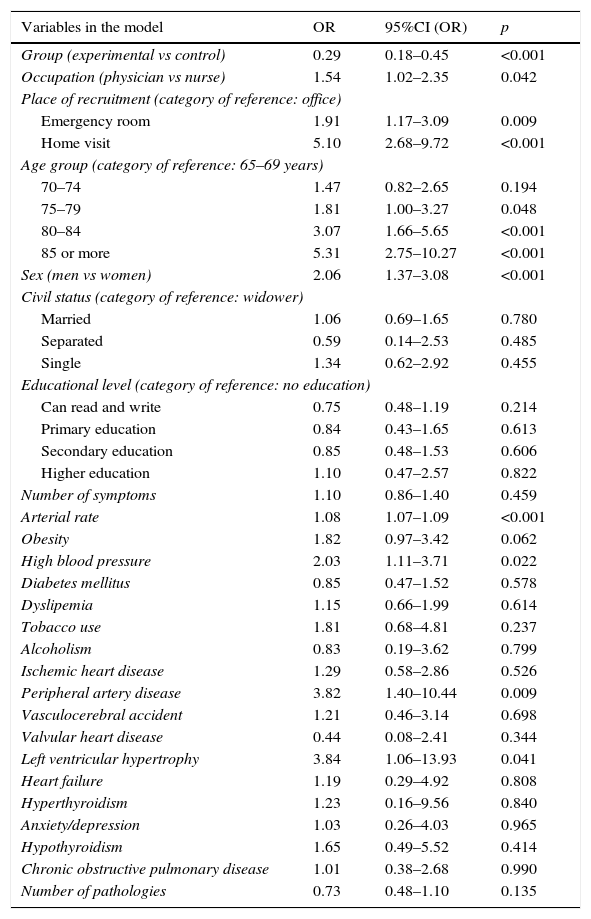The goal of this study was to assess the effectiveness of opportunistic screening through pulse palpation in the early detection of atrial fibrillation in subjects aged ≥65 years versus detection through an active search for patients with symptoms and/or complications and sequelae associated.
Material and methodsThis was a cluster randomized controlled trial performed in 48 primary care centers of the Spanish National Healthcare System. A total of 368 physicians and nurses were randomized. The researchers in the experimental group (EG) performed opportunistic screening for auricular fibrillation, whereas the researchers in the control group (CG) actively searched for symptomatic patients. An ECG was performed on patients found to have an irregular heartbeat to confirm the diagnosis of auricular fibrillation.
ResultsA total of 5465 patients with a mean age of 75.61 years were recruited for the EG, and 1525 patients with a mean age of 74.07 years were recruited for the CG. Of these, 58.6% were female, without significant differences between groups. Pulse was irregular in 4.3 and 15.0% of the patients in the EG and the CG, respectively (p<0.001). A total of 164 new cases of atrial fibrillation were detected (2.3%), 1.1% in the EG and 6.7% in the CG (adjusted OR: 0.29; 95%CI 0.18–0.45).
ConclusionsCase finding for atrial fibrillation in patients aged ≥65 years with symptoms or signs suggestive of atrial fibrillation is a more effective strategy than opportunistic screening through pulse palpation in asymptomatic patients.
Trial registrationThe trial is registered in ClinicalTrials.gov (NCT01291953; February 8, 2011).
El objetivo de este estudio fue evaluar la eficacia del cribado oportunista a través de la palpación del pulso para la detección de fibrilación auricular en sujetos asintomáticos de edad≥65 años frente a la búsqueda activa de pacientes de la misma edad con síntomas y/o complicaciones y secuelas asociadas.
Material y métodosSe realizó un ensayo clínico controlado aleatorizado por clúster en 48 centros de atención primaria del Sistema Nacional de Salud español. Se aleatorizó a un total de 368 médicos y enfermeras. Los investigadores del grupo experimental (GE) realizaron el cribado oportunista para la fibrilación auricular, mientras que los investigadores del grupo control (GC) realizaron una búsqueda activa en pacientes sintomáticos. Se realizó un ECG en los pacientes que tenían un pulso irregular para confirmar el diagnóstico de fibrilación auricular.
ResultadosUn total de 5.465 pacientes con una edad media de 75,61 fueron seleccionados para el GE y 1.525 pacientes para el GC, con una edad media de 74,07 años. El 58,6% eran mujeres, sin diferencias significativas entre los grupos. El pulso era irregular en el 4,3 y el 15% de los pacientes del GE y el GC, respectivamente (p<0,001). Se detectaron un total de 164 nuevos casos de fibrilación auricular (2,3%), el 1,1% en el GE y el 6,7% en el GC (OR ajustada 0,29; IC 95% 0,18-0,45).
ConclusionesLa búsqueda activa, a través de la palpación del pulso, de fibrilación auricular en pacientes de edad≥65 años con síntomas o signos indicativos es una estrategia más eficaz que el cribado oportunista en pacientes asintomáticos.
Registro del ensayo clínicoRegistrado en ClinicalTrials.gov (NCT01291953; 8 de febrero de 2011).











